Does a concert hall with great natural sound matter anymore? People can access beautifully recorded music through their computers, mobile devices, and home audio/video equipment. Saddled with a dreary, substandard 2,738-seat hall with a dwindling audience, Lincoln Center and the New York Philharmonic had to face a hard question: what would persuade people to leave the comforts of home and pay to hear a live performance?
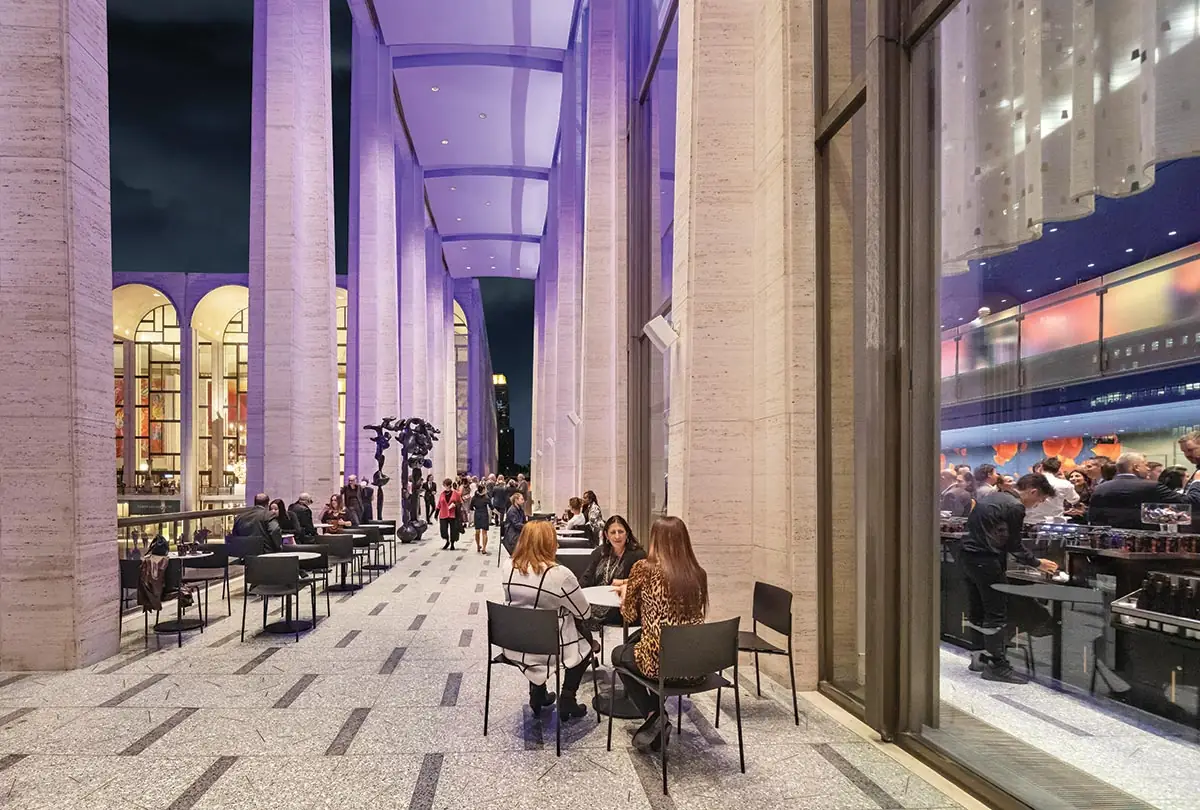
The glass and travertine shell by Max Abramovitz, including its porticoed terrace, is unchanged, though new lighting and diaphanous draperies hint at the transformation. Photo © Michael Moran, click to enlarge.
That became a particularly urgent question in the early 2000’s, when the shortcomings of Lincoln Center’s primary concert venue could no longer be overlooked. The acoustic problems dated back to the original design by Max Abramovitz of Harrison & Abramovitz. Then known as Philharmonic Hall, it opened in 1962 and was unsuccessfully altered several times. The orchestra had lived for decades with a 1976 gut renovation by Philip Johnson and John Burgee (with acoustician Cyril Harris). That iteration stretched what was then called Avery Fisher Hall into the rigidly rectangular “shoebox” plan of such admired venues as Boston’s Symphony Hall. The sound improved, but audiences felt distant from the musicians and disengaged from the experience.
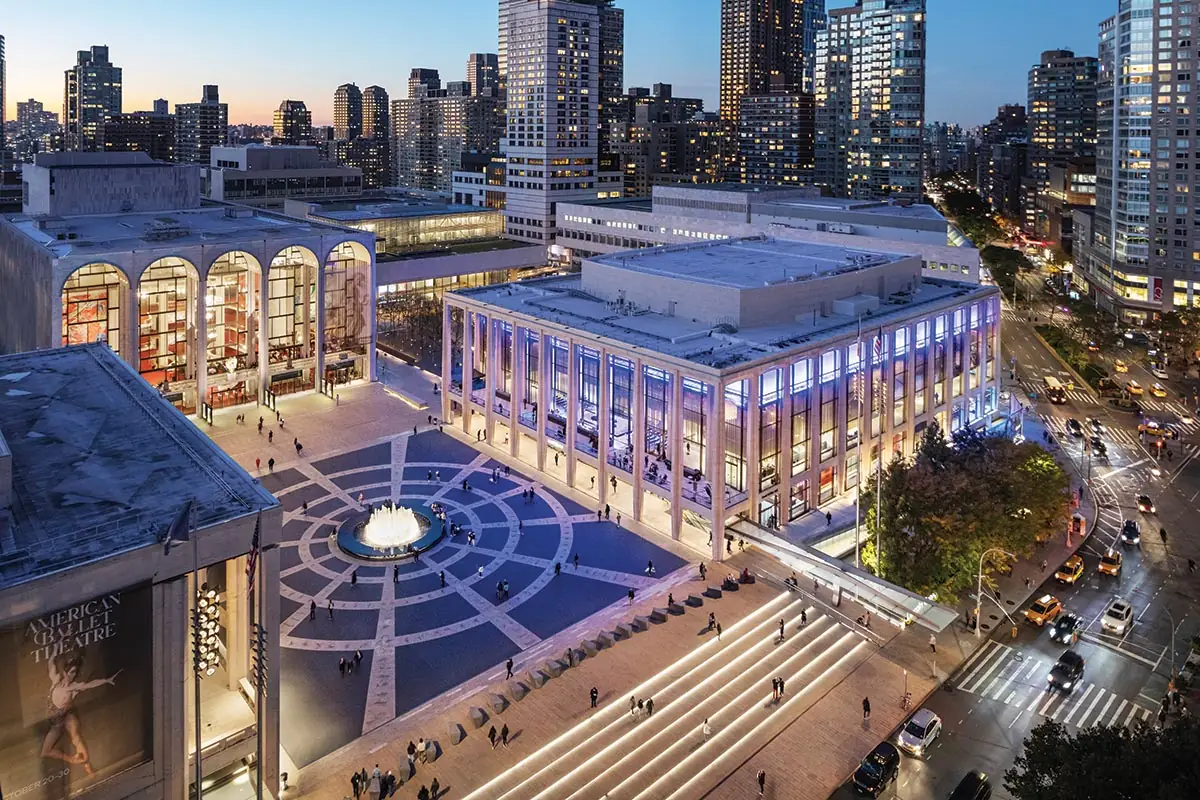
1
The new hall shines among neighboring venues at Lincoln Center (1) and welcomes audiences and locals with a Sidewalk Studio (2) and loungelike lobby (3). Photos © Michael Moran
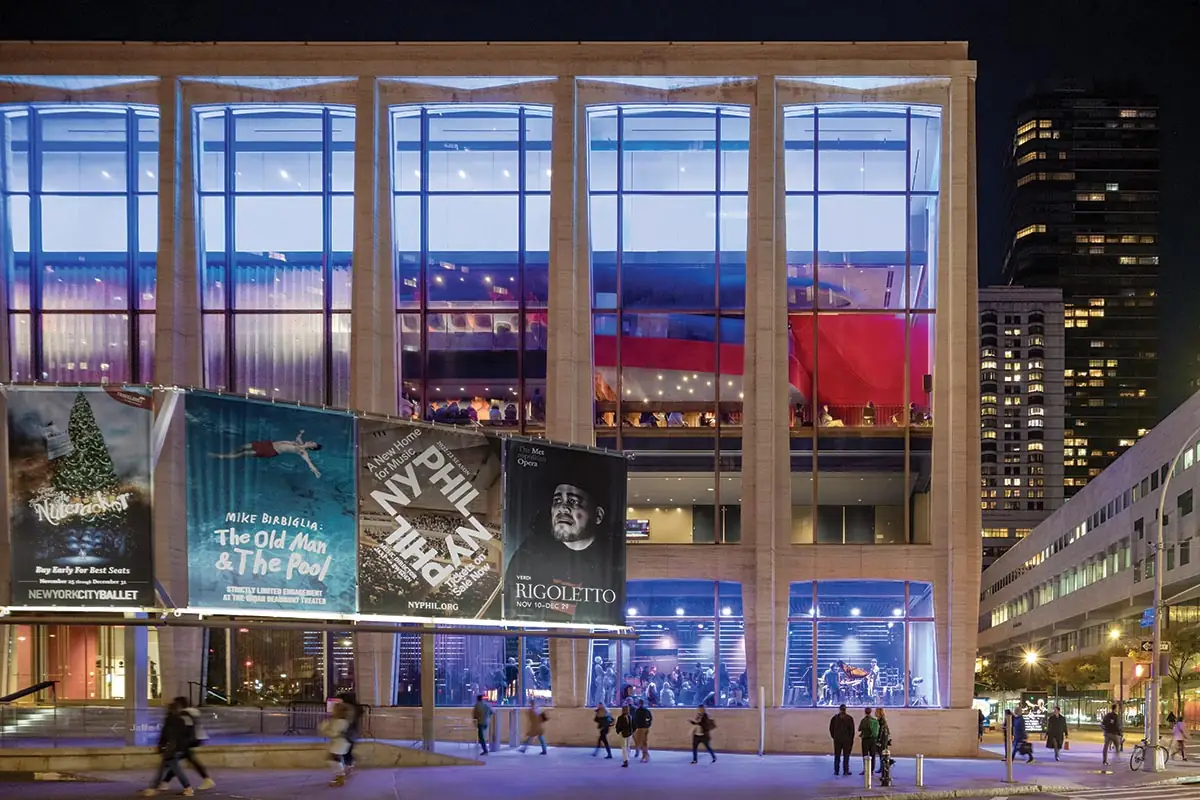
2
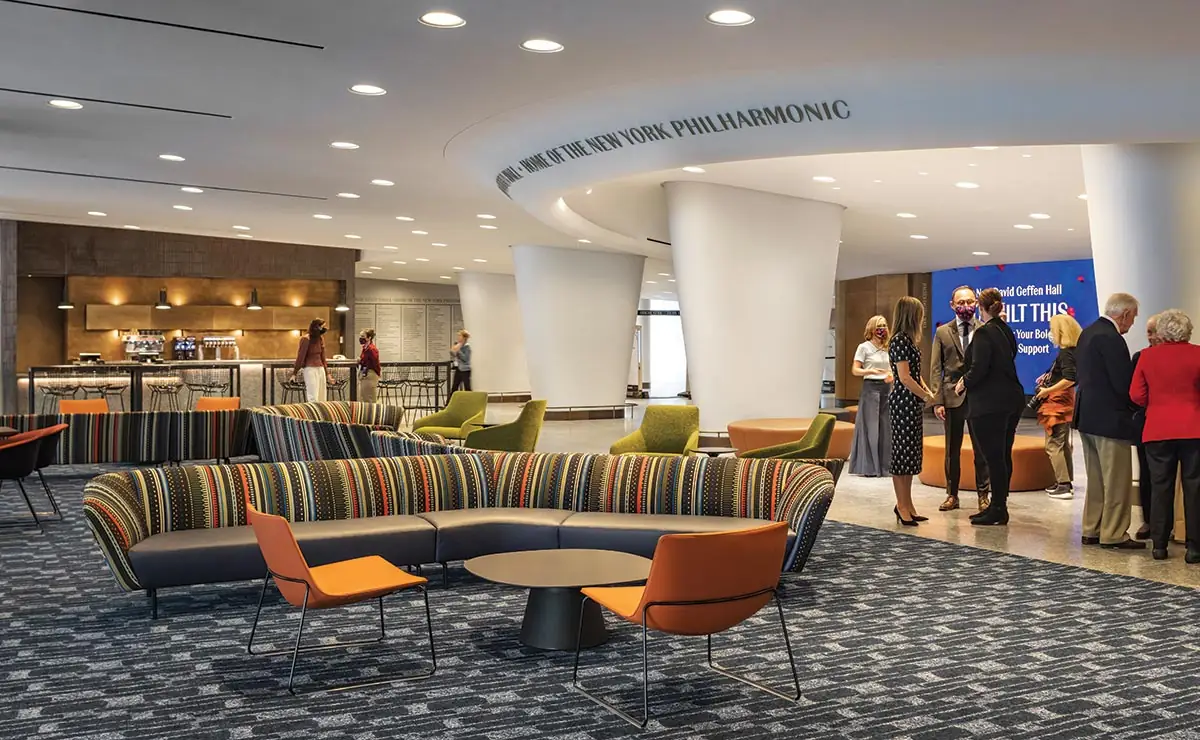
3
After several false starts, a gift in 2015 from the entertainment mogul David Geffen, followed by the arrival of a new leader for the Philharmonic, Deborah Borda—who had brought Frank Gehry’s Walt Disney Hall to fruition—sparked an act of great faith: raising $550 million to attempt another transformative overhaul. The clients teamed Diamond Schmitt, experienced in opera and concert hall design in Montreal; Saint Petersburg, Russia; and the firm’s hometown, Toronto, with Akustiks, a Norwalk, Connecticut, sound consultant that had worked on halls in Nashville, St. Paul, and Cincinnati. (An earlier design, in which Diamond Schmitt had been paired with Thomas Heatherwick, was canceled in 2017 due to a ballooning budget.)
The clients and design team united behind a rethink of the auditorium that would connect with audiences through a visceral, immersive sound and architectural experience—one that would appeal to the Philharmonic’s core fans while broadening its reach with performances that shatter the limits of tradi tional classical-music programming. In this way, says Diamond Schmitt principal in charge Gary McCluskie, “the live event produces engagement that comes to the fore.”
New York–based Tod Williams Billie Tsien Architects (TWBTA) was brought in to bring a greater sense of occasion and improved circulation to the cramped lobby and austere upper-level concourses. The result is a venue with three distinct personalities: the unchanged exterior, a glass box lined with tapered travertine columns in an ambivalent mashup of Classical proportions and Modernist details; the lobby and public spaces, where TWBTA has deployed a hospitality style very much in contrast to Abramovitz’s civic-monument neutrality; and the auditorium, which Diamond Schmitt has treated with purposeful, wood-paneled restraint. The reimagined hall opened in early October.
Self-consciously styled as a “living room,” a lounge just inside the entrance suggests a hotel lobby and has instantly been adopted as a hangout by audience members and casual visitors; it is open all day, even when there are no performances. It replaces an intimidating wall of ticket booths. With administrative offices moved to the top floor, this once-cramped entrance has doubled in size and now features a 50-foot-wide video screen that can simulcast performances and display digital artworks such as the inaugural tableau, An Eclectic Dance to the Music of Time, by Jacolby Satterwhite.
Other changes activate the sober Harrison & Abramovitz exterior: a street-facing welcome center invites ticket-buyers and passersby to learn more about Lincoln Center events while enjoying a coffee; A Sidewalk Studio—visible through the expansive windows of a former private office on a pedestrian-thronged corner—features a lively digital wall and hosts such events as a Nightcap series of cabaret concerts.
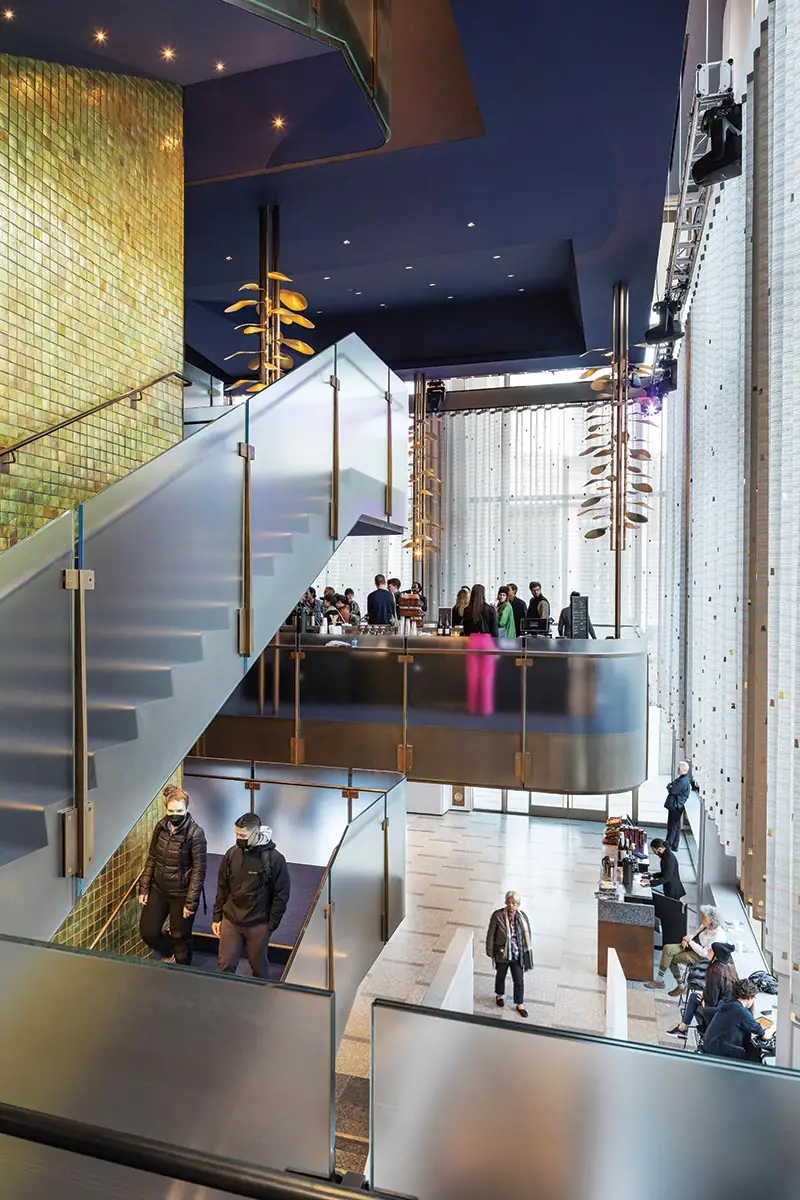
Bronze-wrapped cables bearing expanded first-tier overlooks on each side of the atrium double as housing for leaflike luminaires. Photo © Michael Moran
Above the lobby, Abramovitz’s cool, neutral surfaces on concourses for orchestra seats and three balcony levels have been painted cobalt blue. A felt wallcovering printed with oversize “falling flower petals,” as Tsien calls them, in shades of red, fuchsia, and orange, clads the auditorium exterior, and glows through frosted-glass and bronze railings. A convivial nightclub aura invites audiences to linger, and was devised with concerts, galas, and other events in mind (not to mention bringing in additional revenue), aided by numerous bars and retract able, ceiling-hung trusses for special lighting and sound effects.
TWBTA also reconfigured the atrium that Abramovitz built above the lobby. Now the first tier extends out toward the glazed facade on either end, enabling a more dynamic appreciation of the swirl of people at every level. Cables clad by bronze pipes suspend these balconies; they sprout leaves that diffuse light from built-in lamps.
The theatricality of this procession toward the auditorium may seem a prelude for architectural spectacle within. Instead, audiences will encounter warmth but also a restraint akin to Diamond Schmitt’s previous halls. The architecture defers to the music.
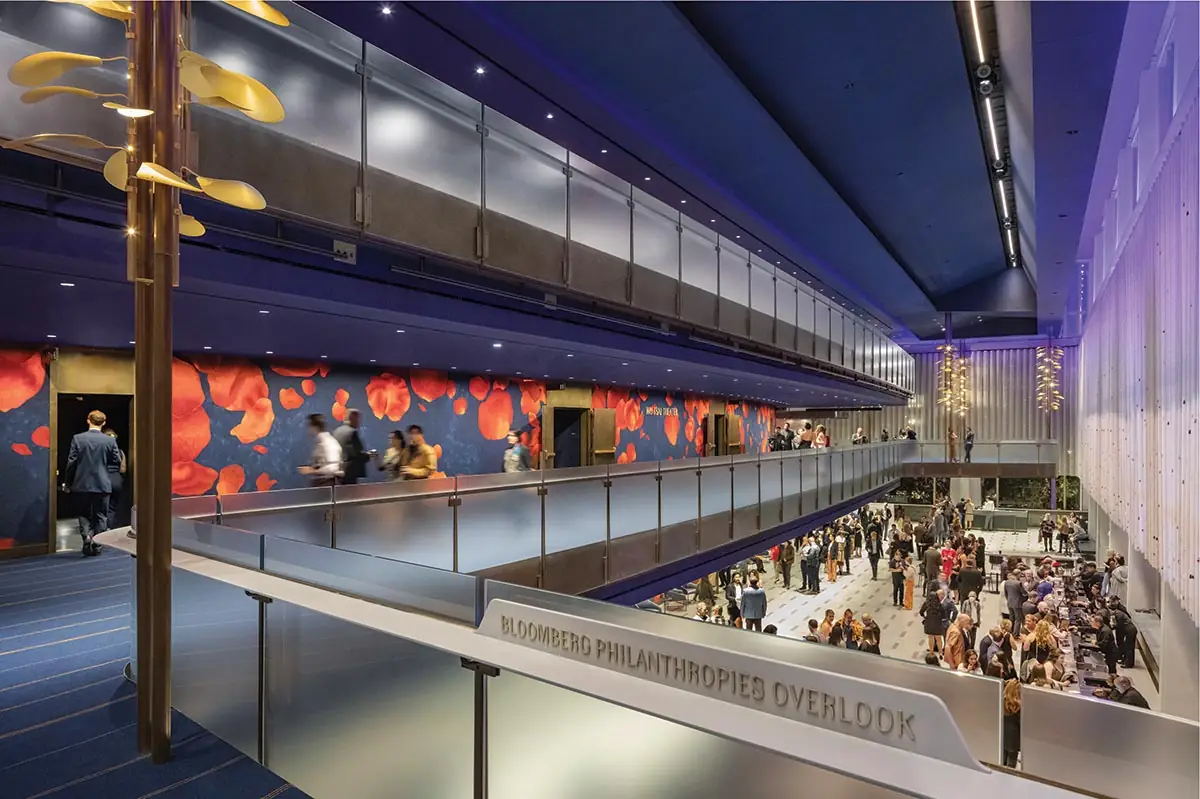
Saturated colors and warm materials enliven areas outside the hall. Photo © Michael Moran
Though it was built within the steel frame and concrete-block perimeter of the 1962 hall, the long-sought intimacy that successfully transforms the experience comes from moving the stage 25 feet into the orchestra-level seating and reducing the overall audience count by 500, to 2,200.
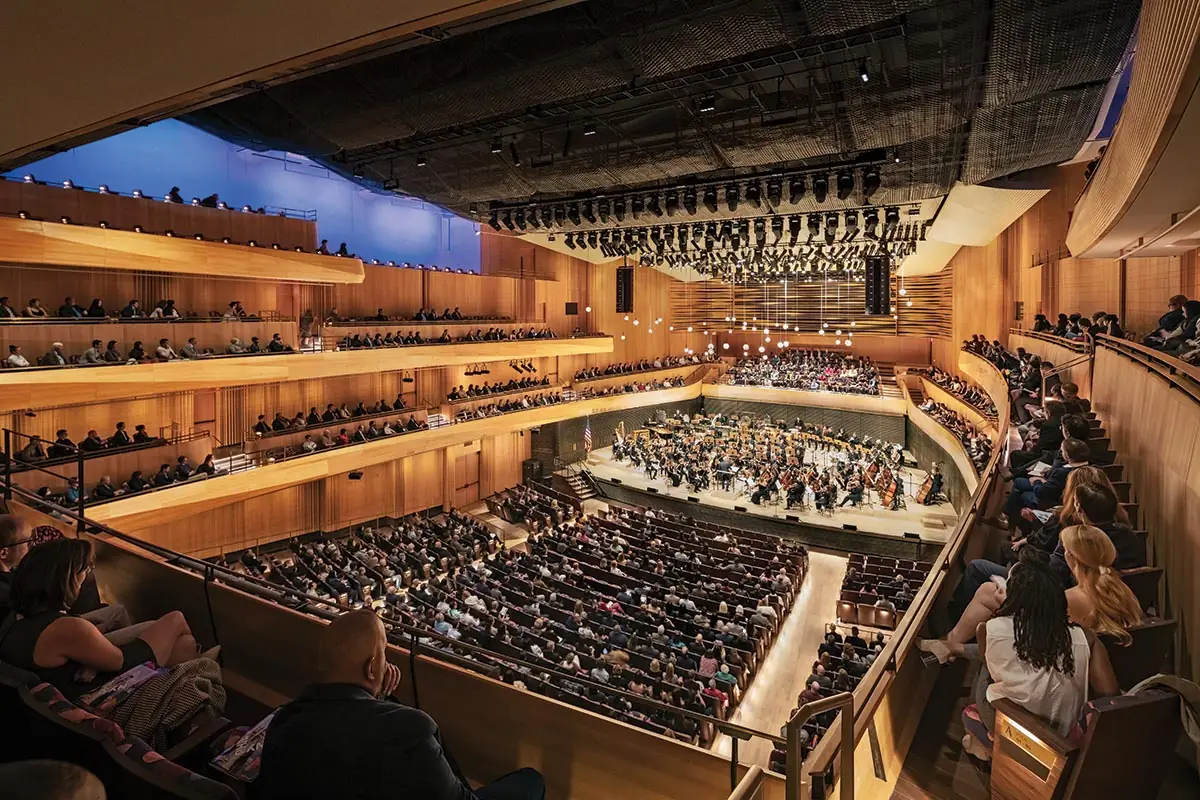
The stage was thrust deeper into the audience, with seating tiers that wrap the performers, akin to the “vineyard” plan of several recent halls. Photo © Michael Moran
A low-ceilinged proscenium that trapped sound has been demolished to achieve the sense of a “single room” that performers and concertgoers share, McCluskie says. Now the side seats of two of the hall’s three tiers curve gently inward to frame the stage, forming the “shallow vineyard” that the architect and acoustical consultant envisioned (see “Acoustic Redux,” below). These seats offer musical immersion and close views of the players. Seven rows of seats behind the stage allow those ticket-holders to face the conductor, or they can contain a chorus.
The beechwood panels that wrap the room “are a unifying visual element,” says McCluskie, and among several strategies intended to reduce the formality of the Johnson design. While the original Philharmonic Hall was conceived as a temple for natural sound, the clients recognized that Geffen had to be far more versatile, so it can support film and amplified performances. The stage—and the seating area behind it—can take on numerous configurations to suit various programs.
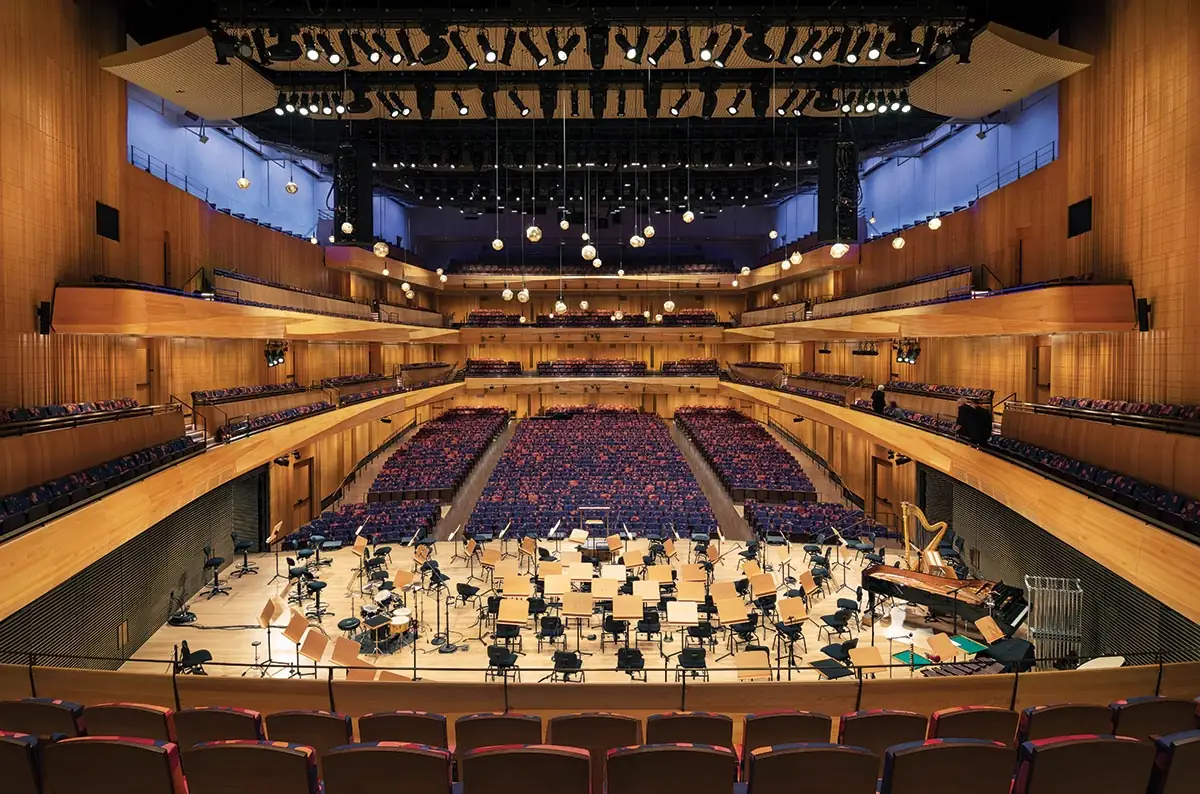
Side tiers curve in toward the rear of Geffen Hall (above), while the outer walls retain the rectangular “shoebox” shape of the 1976 revamp. Photo © Michael Moran
Early performances put both the sound and the advanced video and lighting to the test. Reviews have been positive, if cautious, with most critics describing a new wealth of instrumental intensity, detail, color, and timbre. Selections that mixed the orchestra with video and a partly amplified jazz septet, as well as a performance in which an amplified vocal ensemble led the orchestra, showed that acoustic and enhanced performers could successfully coexist. As for unamplified sound, the New York Times music critic Zachary Woolfe found the hall “mightily improved,” though he feared it was marred by “an objective, almost clinical feeling.” He did note that the sound was consistently balanced throughout the space (a rarity even in the best halls), whether in the rear balconies, where the hall’s resonance most noticeably kicks in, or at the sides, from the newly created seats around the stage.
In recent performances this writer attended, the programs attracted more diverse and younger audiences. With the classical repertory being nearly the last bastion of unamplified performance, Geffen’s versatility may lead to the rediscovery of natural sound for all kinds of music—from jazz to traditions of “unplugged” music from around the world.
Acoustic Redux
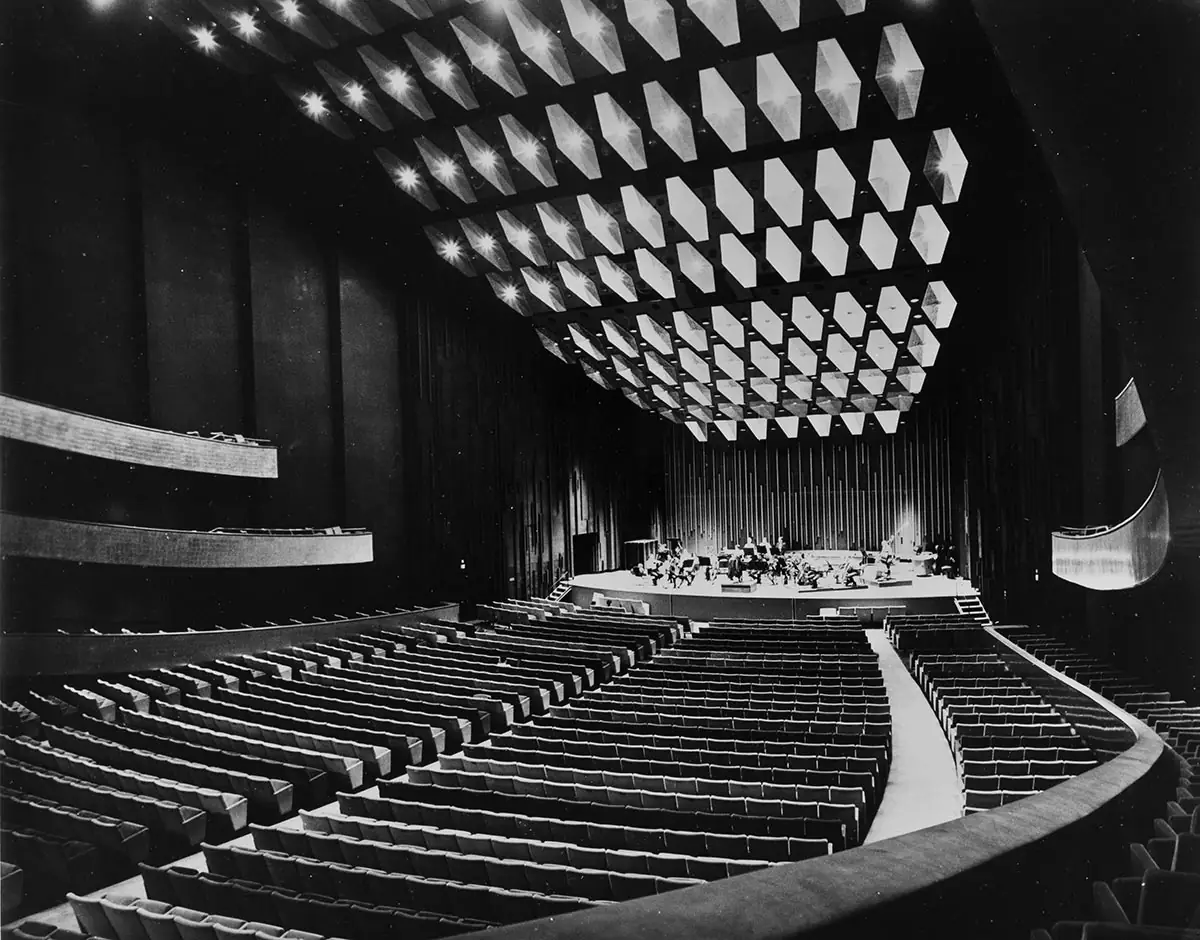
The 1962 auditorium, by Harrison & Abramovitz. Image courtesy Bob Serating, courtesy New York Philharmonic Shelby White & Leon Levy Digital Archives
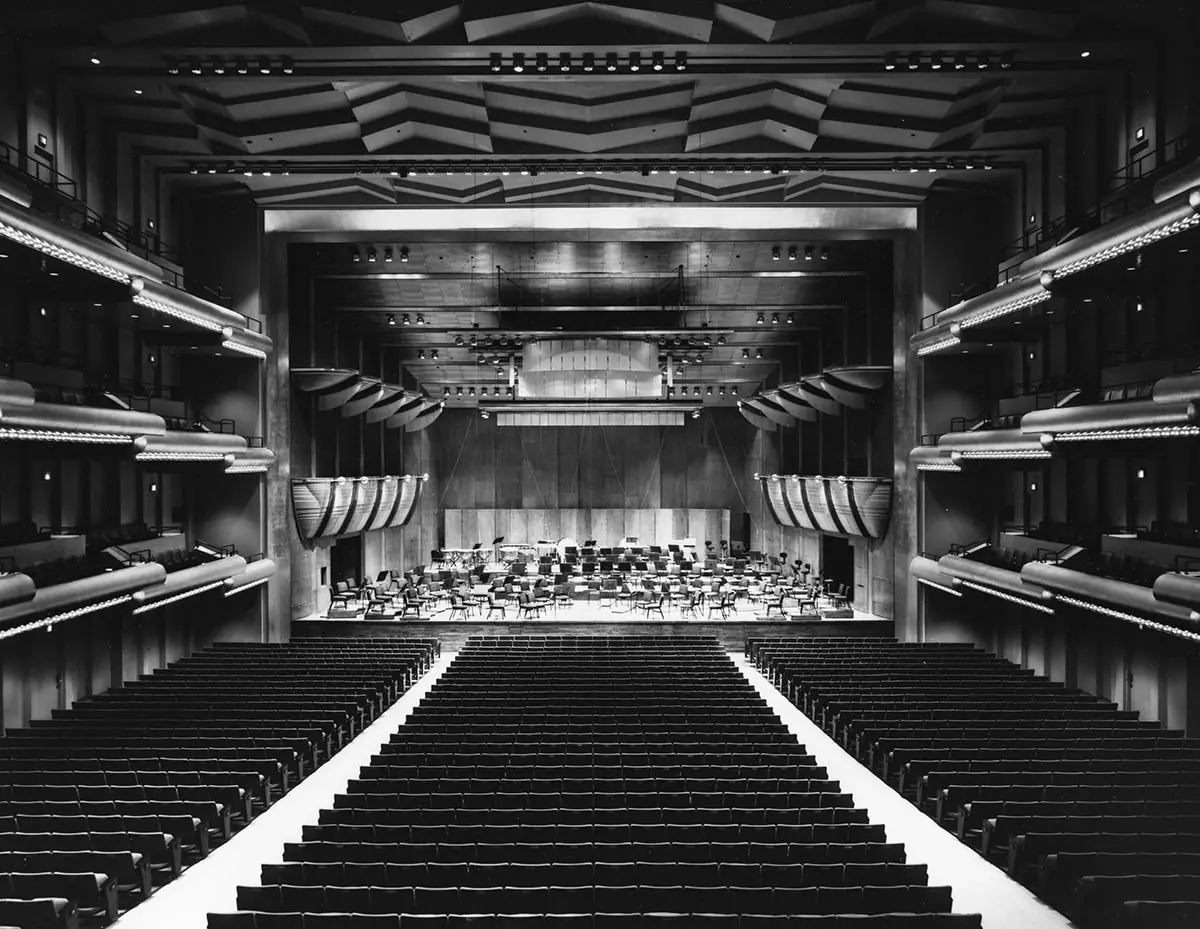
Philip Johnson’s 1976 revision after a 1992 acoustic enhancement. Image courtesy Sandor ACS/New York Philharmonic, New York Philharmonic Shelby White & Leon Levy Digital Archives
A last-minute alteration in the original design of the Harrison & Abramovitz Philharmonic Hall crucially contributed to its flawed sound, according to Paul Scarbrough, principal of the acoustical consultant, Akustiks. Though the acoustician at the time, Leo Beranek, recommended a seat count of 2,400, Lincoln Center insisted on 2,650, closer in size to many peer venues. Scarbrough said that an auditorium’s reverberation time, a fundamental metric, was dependent on the ratio of its volume and the area occupied by seating. The design team “had failed to reckon with the much larger area not occupied by seating, mandated by modern standards of comfort and rules of egress.”
Immediately upon its opening in 1962, musicians, including the orchestra’s charismatic conductor, Leonard Bernstein, as well as critics and audiences recognized that the sound was faulty. Thus legions of experts began dismantling the deep blue hall, with its array of kite-shaped acoustical “clouds” hung from the ceiling and gold-fronted balconies that plunged along the sidewalls toward the stage like roller coasters. They moved sound reflectors, replaced the ceiling, and applied large ovoid bumps along sidewalls. The Philip Johnson overhaul with Cyril Harris (bottom, left) worsened the ratio of seat area to volume by raising the capacity to 2,738.
Once Scarbrough persuaded the clients that decreasing the seat count to 2,200 would remedy the flaw, it was possible to sculpt the hall architecturally to develop other, desirable sound characteristics. Though close-in seats largely receive direct sound, the hall’s shape and materials manage what are called early and late reflections—sound ricocheting off the auditorium’s surfaces—which are calibrated to develop the desired reverberation. Surface configuration and materials absorb or diffuse sound, as needed, to develop aural, spatial qualities like bloom and envelopment without overlapping reflections that last so long they blur the clarity of sound.
Recent acclaimed halls make bravura use of the “vineyard” layout that creates an exciting, immersive experience by arranging seating tiers around a central stage. The configuration was pioneered by architect Hans Scharoun in his Berlin Philharmonie (1963). Others since include Jean Nouvel’s Philharmonie De Paris (2015), Herzog and De Meuron’s Elbephilharmonie, Hamburg (2016), and Frank Gehry’s Disney Concert Hall in L.A. (2003).
David Geffen Hall “melds a vineyard with the tried-and-true shoebox,” Scarbrough explains. “The shoebox produces the character of sound that people like most, while the vineyard brings people closer to the musicians.”
Scarbrough calls the room shape a “shallow” vineyard, one that could squeeze within the existing envelope (bottom, right). Once Johnson’s 1976 auditorium was demolished, Scarbrough was able to see that his own proposed inward curve almost perfectly matched that put in place by Abramovitz. He also could trace remnants of the downward-draping side balconies of that design, which he diagnoses as trapping sound, contributing to the original hall’s problems. The new balconies run nearly level.
The variegations in the rippling wall panels of solid beechwood aid diffusion. Unlike the previous wall panels, these are fully attached to plaster over the concrete-block walls, which aids bass response.
The tier fronts that surround the stage are oriented to help musicians hear each other and are augmented by textured, fiber-reinforced plastic panels suspended below the ceiling above the stage. These can be tilted to adjust the balance between musicians and audience, and lowered for small ensembles. Because the hall is intended to accommodate compositions that call for amplified and unamplified instruments, sound-absorbing banners can descend between the ceiling panels and rise from floor compartments along the sidewalls to balance the mix. Over the audience, a zigzag-patterned plaster ceiling can barely be seen above metal-mesh scrims. It’s the only element of the Johnson-Harris design that remains—kept, Scarbrough says, because it works. JSR
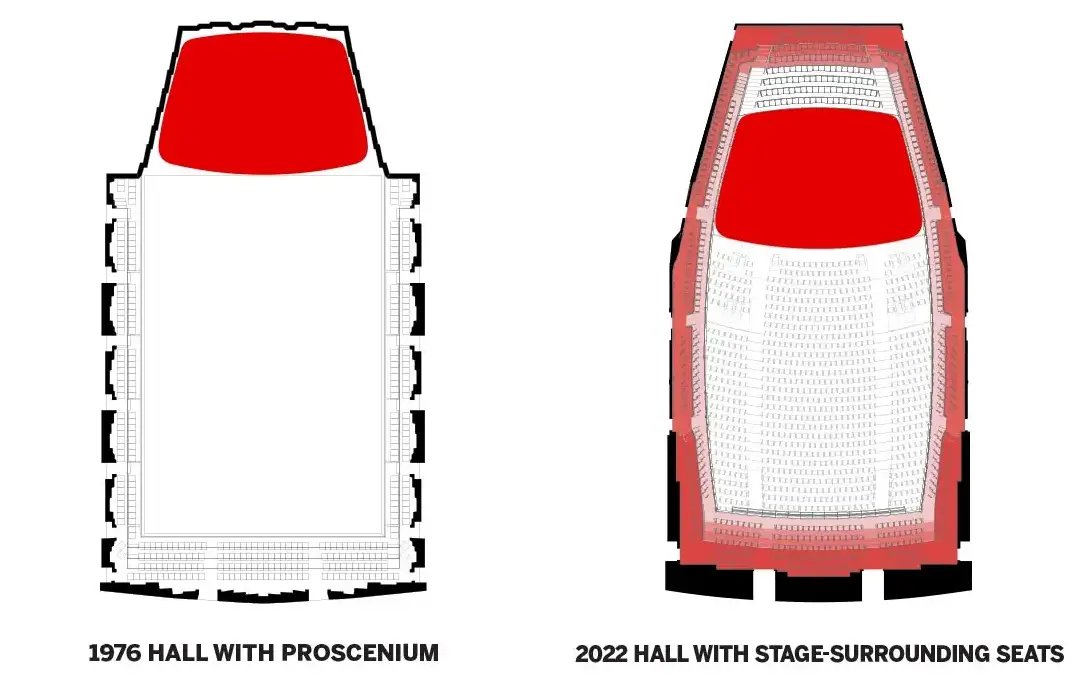
Image courtesy Diamond Schmitt Architects
Click plans to enlarge
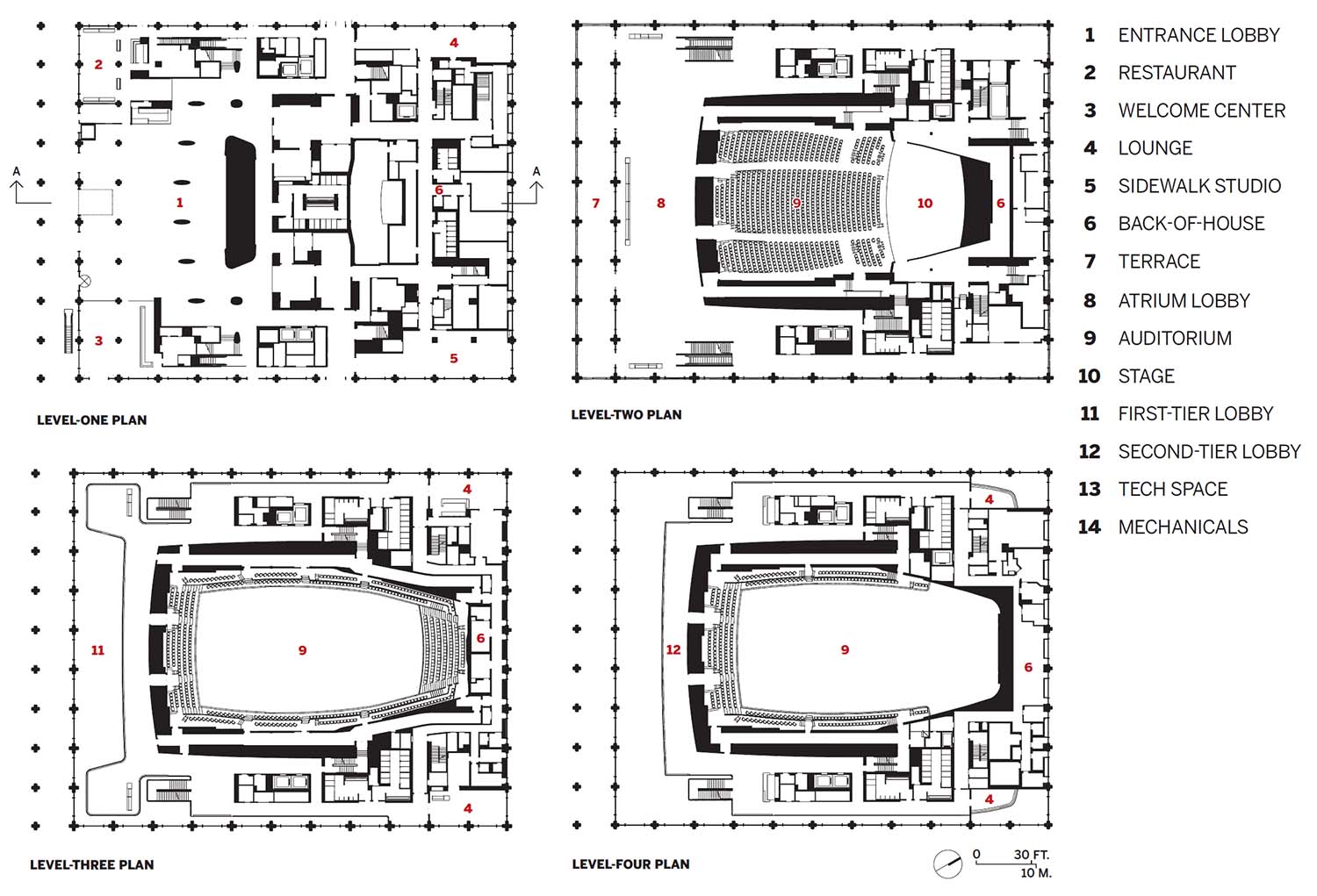
Click section to enlarge
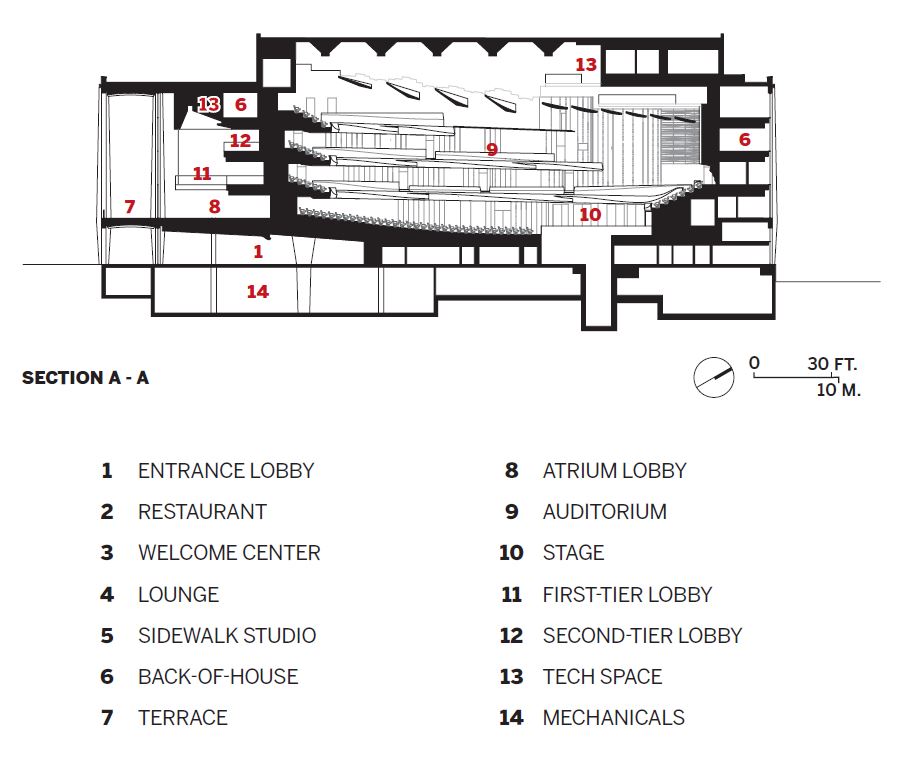
Credits
Architect (Concert Hall):
Diamond Schmitt Architects (concert hall) — Gary McCluskie, principal in charge; Sybil Wa, Matthew Lella, project architects
Architect (Public spaces):
Tod Williams Billie Tsien Architects | Partners — Tod Williams, Billie Tsien, principals in charge; Paul Schulhof, partner; Azadeh Rashidi, John Skillern, project managers; Whangjin Suh, Olen Milholland, project architects
Engineers:
Thornton Tomasetti (structural); Kohler Ronan (m/e/p/fp)
General Contractor:
Turner Construction Company
Consultants:
Akustiks (acoustic design); Fisher Dachs Associates (theater planning); Fisher Marantz Stone (lighting); Forst Consulting Architects (envelope)
Client:
Lincoln Center; New York Philharmonic
Size:
225,000 square feet
Cost:
Withheld
Completion Date:
October 2022
Sources
Metal Panels:
Centria
Glass:
Pulp Studio; Bendheim Architectural Glass; Infinite Glass & Metals
Terrazzo Flooring:
Platinum, Inc.
Moveable Bars:
Capsule
Wood:
Fetzer; Legere
Ceilings:
Kreysler & Associates; Eventscape
Lighting:
Aurora Lampworks
Interior Finishes:
Benjamin Moore; Liora Manné; Formica; Corian; Orsoni; Scott Group; Kriska Decor; Eric Bruce with creation Baumann
Furnishings:
Arper; Andreu World; Geiger; Knoll; Prismatique; Maharam


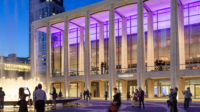
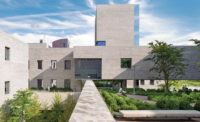
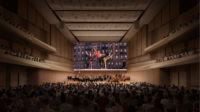
Post a comment to this article
Report Abusive Comment